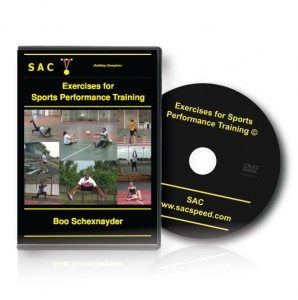The ability to effectively move laterally is critical for athletes in many sports. Here are some speed and agility exercises that are designed to improve lateral movement.
In the video clip below Bobby Smith, strength and conditioning coach at Reach Your Potential Training (RYPT), shares his thoughts and ideas on how to effectively train for better lateral movement in your athletes. His presentation was delivered at a recent Glazier Athletic Performance Clinic.
This clip is just one portion of his presentation. If you would like information about how to gain access to his entire presentation, as well as hundreds of other athletic performance clinic presentations, click the link Glazier Athletic Performance Clinics.
The YouTube video below has audio, so please make sure that your sound is turned up and that you have access to the site. Note that some schools block access to YouTube. Click the arrow to play the video.
